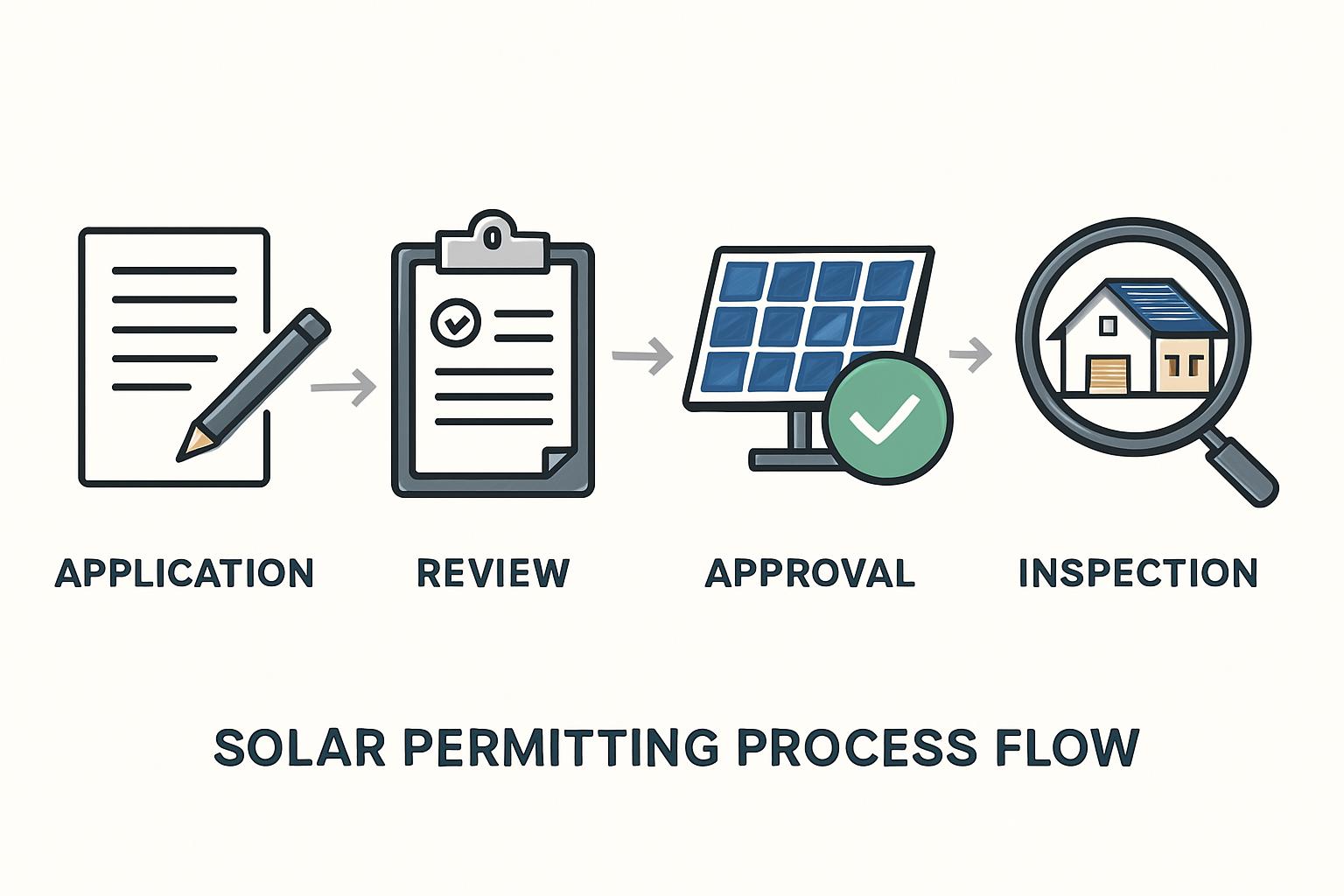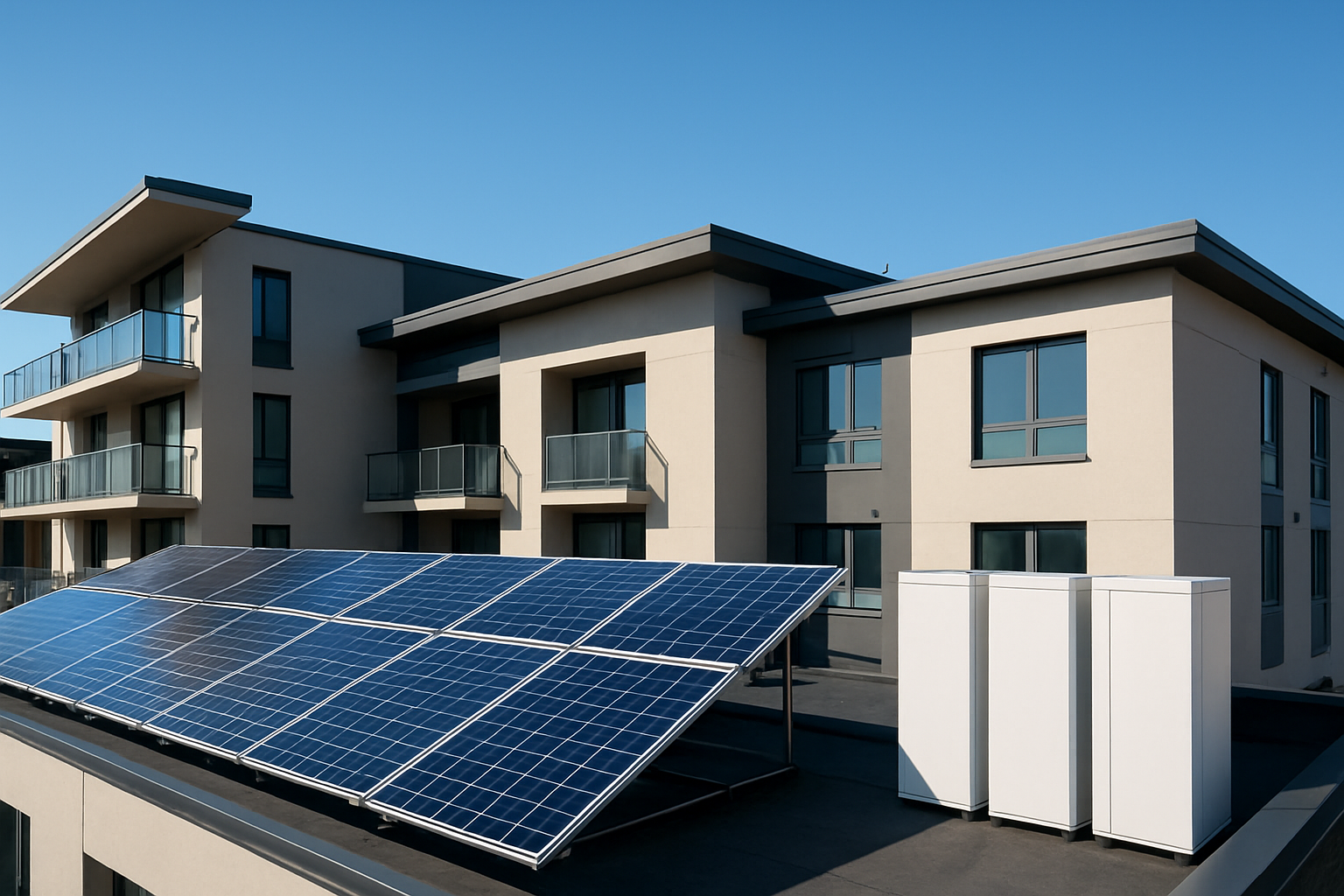Installing photovoltaic (PV) systems on rooftops involves a critical balance of electrical safety and fire protection. You must carefully navigate the requirements set by the National Electrical Code (NEC) Article 690 and various Fire Codes. These regulations ensure the safety of both the system and emergency responders. Understanding these distinct yet interconnected standards is fundamental for a successful and compliant solar installation.
This article clarifies the specific demands of each code, highlights their overlaps, and offers practical strategies for designing and installing PV systems that meet all safety benchmarks. We aim to help you streamline your solar permitting process and ensure the long-term reliability of your energy solution.

The Foundation: Understanding NEC 690 Requirements
The National Electrical Code (NEC), specifically Article 690, provides the core electrical safety guidelines for solar photovoltaic (PV) systems. This code aims to safeguard individuals and property from electrical hazards. It covers everything from wiring methods to grounding and rapid shutdown features . When conflicts arise between Article 690 and other NEC articles, Article 690 typically takes precedence .
Electrical Safety and Rapid Shutdown
A crucial aspect of NEC 690 is the rapid shutdown function, designed to reduce shock hazards for emergency responders during an incident . This feature ensures that PV system circuits on or in buildings can be quickly de-energized. The requirements for rapid shutdown have evolved through various NEC editions, including 2014, 2017, 2020, and 2023, reflecting ongoing advancements in solar technology and safety protocols .
Specifically, controlled conductors located outside the array boundary (defined as 1 foot or 305 mm from the array) or more than 1 meter (3 feet) from the building's entry point must limit voltage to no more than 30 volts within 30 seconds of initiation . For conductors inside the array boundary or within 1 meter (3 feet) of the building's surface penetration, the voltage must reduce to 80 volts or less within the same 30-second timeframe . An initiation device, often located outside the building for residential structures, triggers this essential safety function .
Conductor Sizing and Overcurrent Protection
NEC 690 also details requirements for conductor sizing and overcurrent protection to prevent electrical faults and ensure system integrity. Proper grounding is another vital component, protecting against electric shock and potential fire hazards . These measures are integral to the reliable and safe operation of any PV system. Our National Electrical Code (NEC) Article 690 outlines these specifications for inverters and source circuits, ensuring compliance with electrical codes and safe installations .
Fire Safety First: Fire Code Regulations for PV
While NEC 690 focuses on electrical safety, Fire Codes, such as the International Fire Code (IFC) and NFPA 1, address fire safety concerns, particularly regarding firefighter access, egress, and ventilation on rooftops with PV installations . These codes are crucial for mitigating fire risks and ensuring emergency personnel can operate safely.
Clearances for Firefighter Access
Fire Codes mandate specific roof setbacks and access pathways. These provisions allow firefighters to safely navigate the roof, ventilate smoke, and perform their duties during a structure fire. For instance, many jurisdictions require a minimum 36-inch (914 mm) wide pathway from the eave to the ridge on roof planes with panels . You typically need at least two such pathways on separate roof planes, with one accessible from the street or driveway side . These pathways must remain clear of obstructions like vent pipes or conduits .
Ridge setbacks are also critical for ventilation. For PV arrays covering 33% or less of the total roof area, a minimum 18-inch (457 mm) setback is often required on both sides of a horizontal ridge. If arrays cover more than 33% of the roof area, this setback increases to at least 36 inches (914 mm) . Some codes offer alternative setbacks for dwellings equipped with automatic fire sprinkler systems, such as 18 inches for up to 66% coverage and 36 inches for over 66% coverage . Additionally, some local codes may require a clear perimeter around roof edges, ranging from 4 to 6 feet, depending on the building's size .
Fire Resistance Ratings
Fire Codes also consider the fire resistance of PV modules and systems. Solar panels are classified based on their ability to resist fire hazards and prevent flame spread . The classifications are:
- Class A: Offers the highest level of fire resistance, capable of withstanding severe fire exposure .
- Class B: Provides moderate fire resistance for standard residential and commercial use .
- Class C: Offers basic fire protection, suitable for areas with minimal fire risks .
When selecting a solar panel system, check its fire rating to ensure it meets industry standards and local safety requirements. A Class A rating provides maximum protection . The installation of a PV system should not compromise the minimum fire safety requirements for the roof, meaning the PV system's fire classification should match that of the roof assembly . Extensive testing, including methods like UL 1703 and IEC 61730, helps determine these ratings .
Bridging the Gap: Reconciling NEC 690 and Fire Code
Navigating both NEC 690 and Fire Code requirements demands a comprehensive approach. While NEC 690 focuses on electrical integrity, Fire Codes prioritize physical access and fire spread prevention. These distinct focuses can sometimes lead to perceived conflicts or require careful coordination in design.
Common Overlaps and Conflicts
The primary area of overlap involves ensuring overall safety. Both codes contribute to a safer environment for building occupants and emergency personnel. For example, NEC 690's rapid shutdown requirements directly support firefighter safety by de-energizing PV systems quickly . However, the specific physical layout requirements, such as roof setbacks and access pathways, are predominantly governed by Fire Codes, not NEC 690 .
A potential conflict might arise if a strict interpretation of electrical conduit routing (NEC) interferes with a required clear access pathway (Fire Code). In such cases, designers must find solutions that satisfy both. For instance, routing conduits as close as possible to ridges or valleys and then directly to an outside wall can reduce trip hazards and maximize ventilation opportunities, aligning with both electrical safety and firefighter access needs .
Best Practices for Compliance
Achieving compliance requires meticulous planning and a deep understanding of both national and local regulations. Here are some best practices:
- Early Planning: Integrate both electrical and fire safety considerations from the initial design phase. This proactive approach helps avoid costly redesigns and delays during the permitting process .
- Local Authority Consultation: Always consult with your local Authority Having Jurisdiction (AHJ) and fire department. Local amendments and interpretations can vary significantly .
- Integrated Design: Consider the entire PV system as an integrated unit, including panels, inverters, and energy storage solutions. Ensure all components meet their respective code requirements and work together safely.
- Documentation: Maintain thorough documentation of all design choices, equipment specifications, and compliance measures. This helps during inspections and future maintenance .
The International Energy Agency (IEA) highlights the value of drawing on experiences from markets with similar requirements when planning to increase the share of variable renewable energy, suggesting a global perspective on best practices for grid integration and safety .
Practical Application: Designing for Safe and Compliant PV Systems
Designing a PV system that adheres to both NEC 690 and Fire Code requirements involves a systematic approach, from initial site assessment to final inspection.
Site Assessment and Planning
Begin with a detailed site assessment. Evaluate the roof's structural integrity, pitch, and available area. Identify potential obstructions that could impact setback requirements or access pathways. Consider the building's occupancy type (residential vs. commercial), as this can influence specific code applications .
During the design phase, strategically place PV arrays to maintain all required fire setbacks and access pathways. For instance, ensure arrays do not exceed 150 feet by 150 feet in dimension in either axis to allow for smoke ventilation . If you plan to incorporate battery storage systems (ESS), remember that NEC Article 706 covers their requirements, and Article 705 addresses interconnected electric power production sources, which is vital for comprehensive system safety . Our company specializes in lithium iron phosphate batteries and integrated ESS, designed for high performance and reliability, which seamlessly integrate with compliant PV installations.
Permitting and Inspection Insights
The permitting process ensures your solar installation complies with local safety standards, building codes, and zoning regulations . Submit comprehensive plans, including structural drawings, electrical diagrams, and a proposed system design, to your local building department . Be prepared for inspections that assess electrical connections, structural integrity, and overall safety . Any issues, such as improper wiring or missing safety features, will require correction before re-inspection .
Efficient permitting significantly reduces solar soft costs and accelerates project timelines . Errors in applications or outdated codes can cause delays . Our experience in the solar industry, including the development of off-grid solar solutions and solar inverters, emphasizes the importance of meticulous planning and adherence to regulations for successful projects.
Your Path to Energy Independence
Navigating the complexities of NEC 690 and Fire Code roof setbacks for PV installations is a critical step toward achieving safe, compliant, and reliable solar energy. By understanding these regulations and implementing best practices, you protect your investment and contribute to a safer community. Our commitment lies in providing reliable and scalable energy solutions, empowering you to embrace energy independence with confidence.
Frequently Asked Questions
What is the main difference between NEC 690 and Fire Code for PV installations?
NEC 690 primarily addresses electrical safety, wiring, grounding, and rapid shutdown features for PV systems. Fire Codes, such as the IFC and NFPA 1, focus on firefighter access, roof setbacks, and fire spread prevention to ensure emergency responders can safely operate on and around solar-equipped buildings .
Are roof setbacks for PV panels mandatory everywhere?
Yes, roof setbacks are generally mandatory for PV panel installations, though specific dimensions can vary by local jurisdiction and the percentage of the roof covered by panels. These setbacks ensure adequate space for firefighter access and ventilation . Always check with your local Authority Having Jurisdiction (AHJ) for precise requirements.
What is a rapid shutdown system and why is it important?
A rapid shutdown system (RSS) is an NEC 690 requirement that quickly de-energizes the PV system's electrical conductors to a safe voltage level within a specified time frame (e.g., 30 volts or 80 volts within 30 seconds) . This is crucial for reducing electrical shock hazards for emergency responders during a fire or other emergency .
How do fire ratings for solar panels affect installation?
Solar panels receive fire ratings (Class A, B, or C) based on their ability to resist flame spread . Many building codes require PV systems to match or exceed the fire resistance rating of the roof assembly they are installed on . Selecting panels with an appropriate fire rating, typically Class A for maximum protection, is essential for compliance and safety .
Does NEC 690 cover energy storage systems (ESS)?
While NEC 690 focuses on PV systems, other articles like NEC 706 specifically cover the requirements for energy storage systems (ESS) . When PV and ESS are combined, NEC 705 addresses the requirements for interconnected electric power production sources. Integrating these systems requires adherence to all applicable codes for comprehensive safety and functionality .





Leave a comment
All comments are moderated before being published.
This site is protected by hCaptcha and the hCaptcha Privacy Policy and Terms of Service apply.